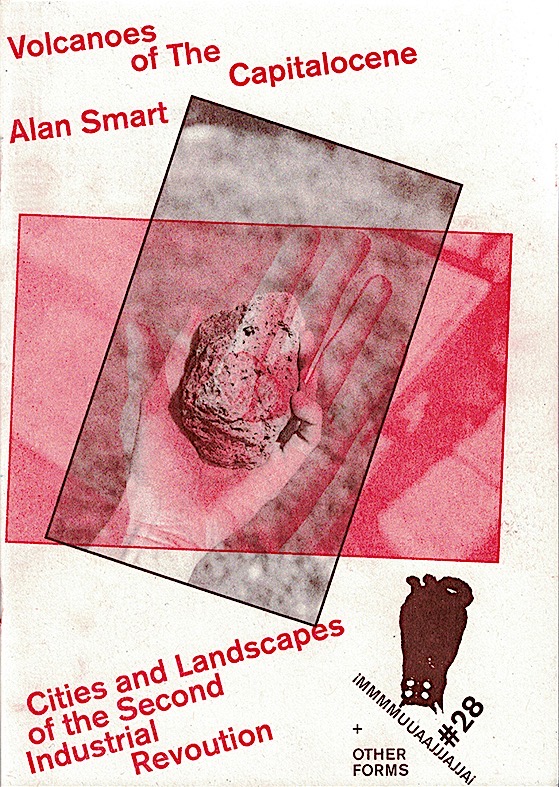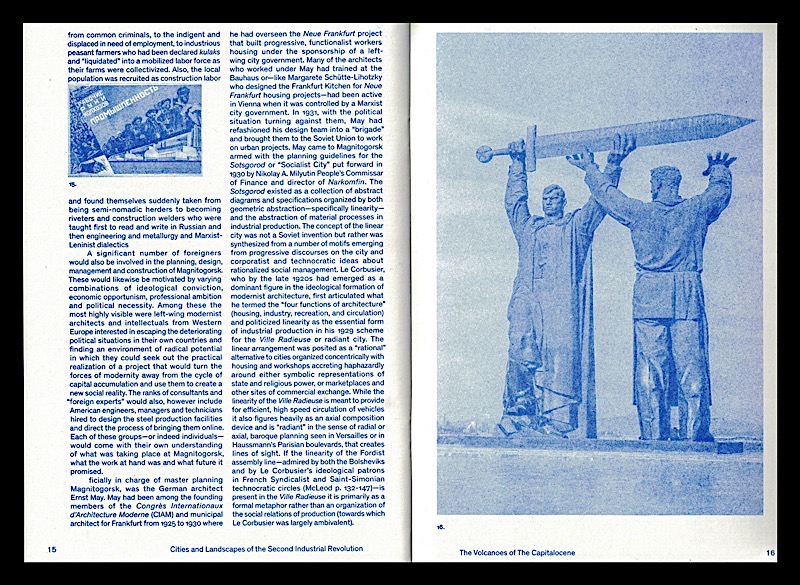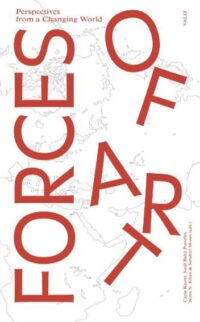Volcanoes of the Capitalocene
Cities and Landscapes of the Second Industrial Revolution
€10,00
In stock (can be backordered)**stock child *
During the rapid industrialization of the Soviet Union’s first five-year plan, the city of Magnitogorsk was built on a sparsely inhabited site in the Western Siberian steppe marked by a geological anomaly: a mountain of almost pure iron ore. In the rhetoric of Soviet planners and the European modernist architects who had come east to help build a new world, Magnitogorsk was to manifest the ideal of “Socialist City” in being organized completely by production such that the linearity of the assembly line, and the processes of steel making would extend into the kitchens and bedrooms of the workers and drive the creation of a new culture.
24 pages
Paperback, 21.5x28 cm
English
Other Forms, 1st edition 2021
ISBN 9788434314924
Paperback, 21.5x28 cm
English
Other Forms, 1st edition 2021
ISBN 9788434314924








